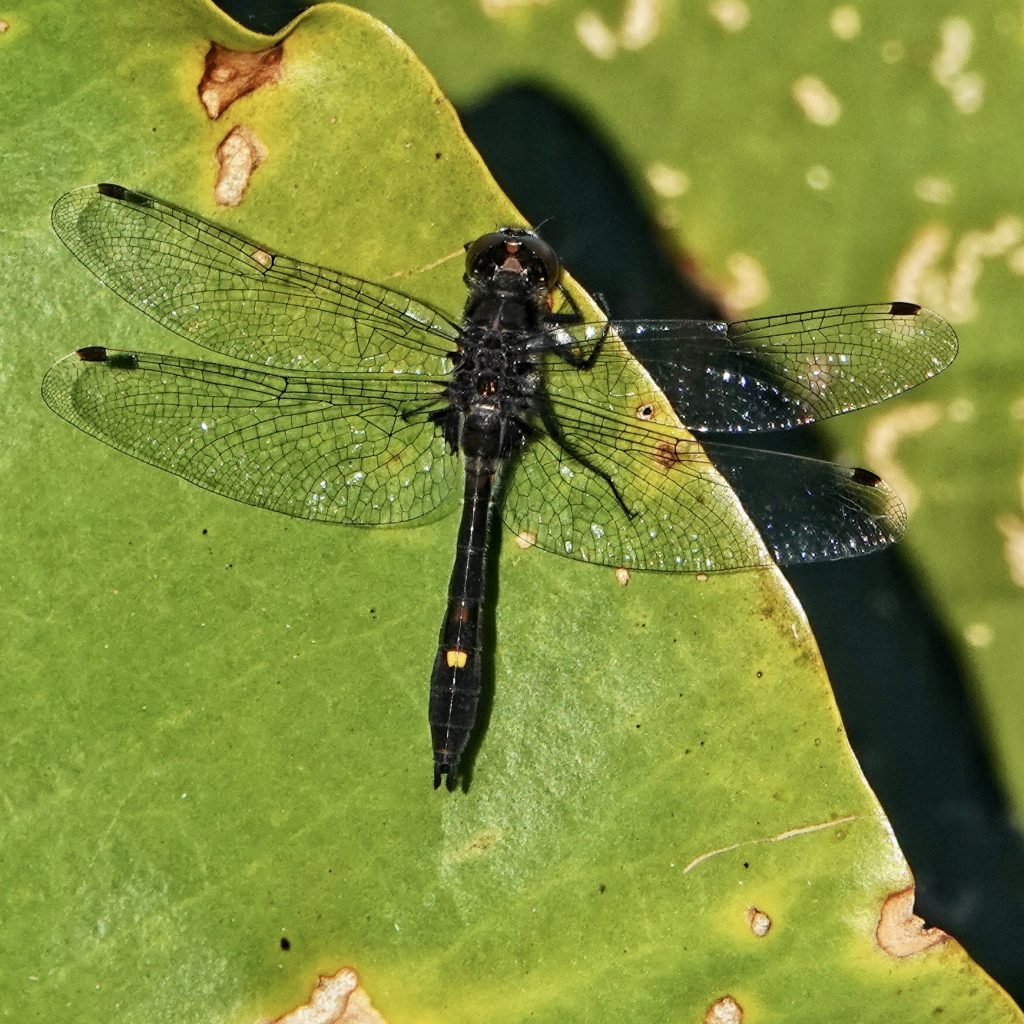
On my way back from Mt. St. Helens a couple weeks ago I stopped at Seaquest SP in Cowlitz County, Washington, to stretch my legs. The main park is across the highway from Silver Lake, but they have built a pair of boardwalks, connected by a pair of trails, that cross an arm of the lake and give you a boaters-eye view of the marsh. It’s about a mile loop, and gives you access to a boggy (and buggy) wetland that would probably be impenetrable to wade, besides the fact that you would injure the plants and spook the wildlife before you got close enough to see them, with the added benefit that you don’t end up soaking wet and covered in rotted vegetation and goose crap.
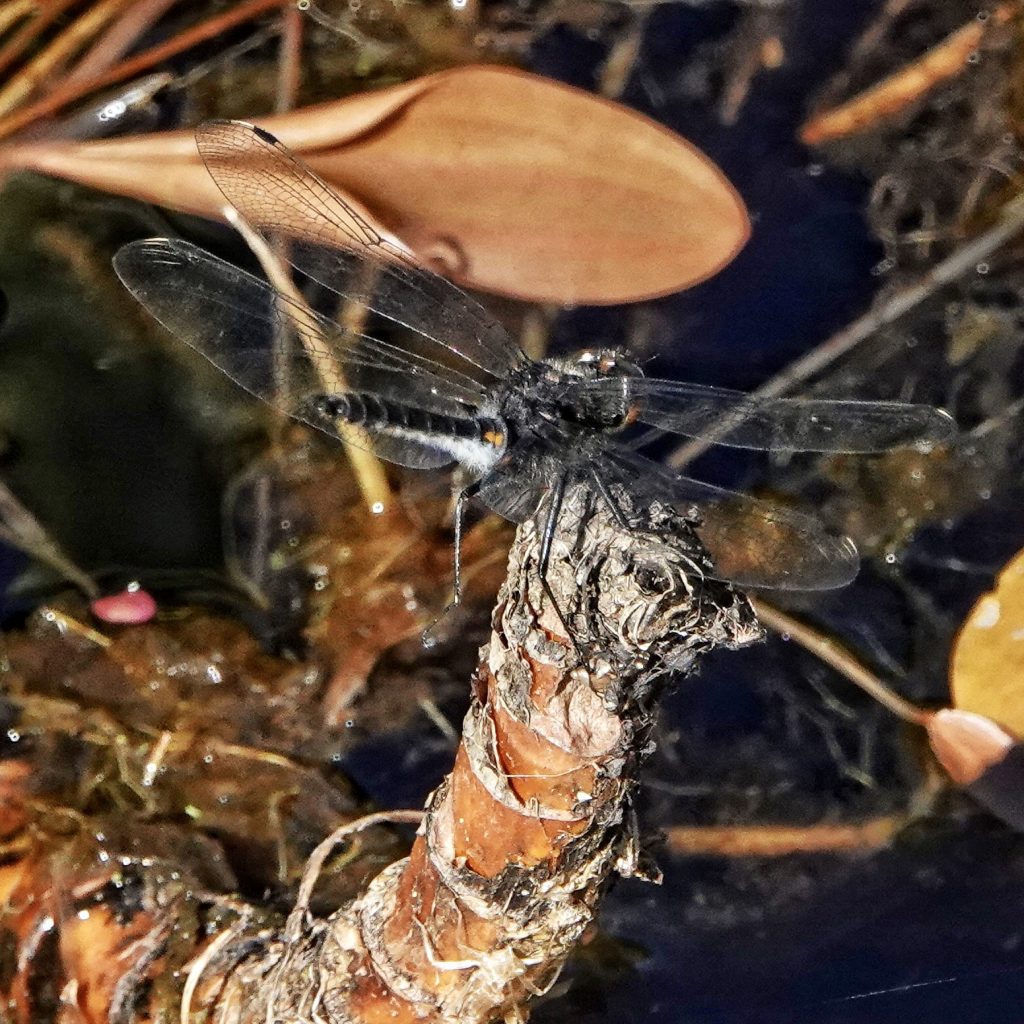
It was there that I found these Dot-tailed Whitefaces (Leucorrhinia intacta), a very common species in our region, especially in the lowlands west of the Cascades, but one that I’ve struggled to get good photos of (Merriam-Webster says that it’s ok to end a sentence with a preposition). The problem isn’t that they are flighty (they aren’t) or that they don’t perch (they do, and do so frequently). It’s that they are small and usually on lily pads or floating algae some distance from solid ground so that even with significant cropping I don’t get great photos, and when I go mucking about in ponds and swamps I tend to leave the expensive electronics at home.
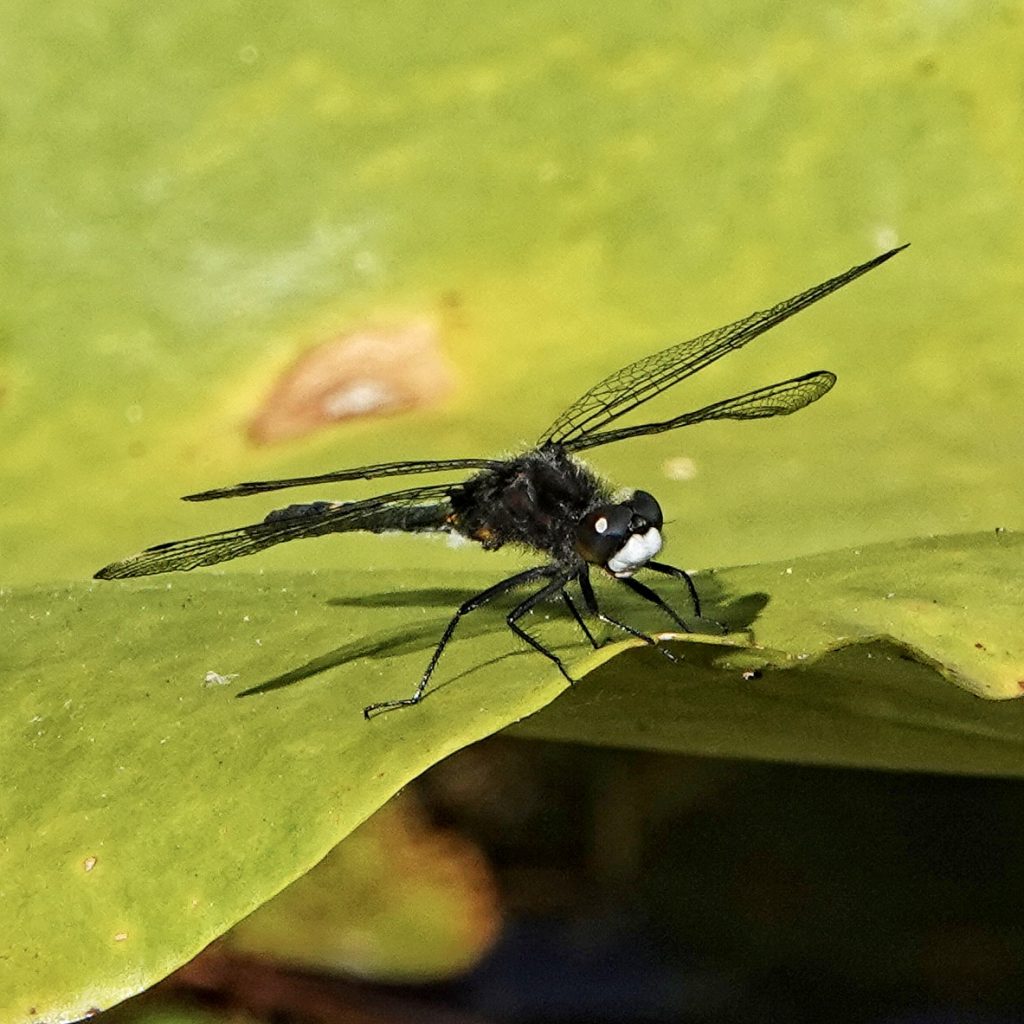
But the boardwalks at Seaquest SP are an ideal spot to not only find but photograph these lovely and delicate dragonflies. They also have the advantage that they are sinuous, and there is habitat on both sides, so it’s usually productive to just concentrate on areas that have good angles from the sun, so that any resulting photos are not glared out or in deep shade. I saw dozens of Dot-tailed Whitefaces on this visit, and ended up with enough good photos that choosing the ones I liked best for this profile was a somewhat painful task, and I had to ask Pam to help me determine which of my babies to abandon.
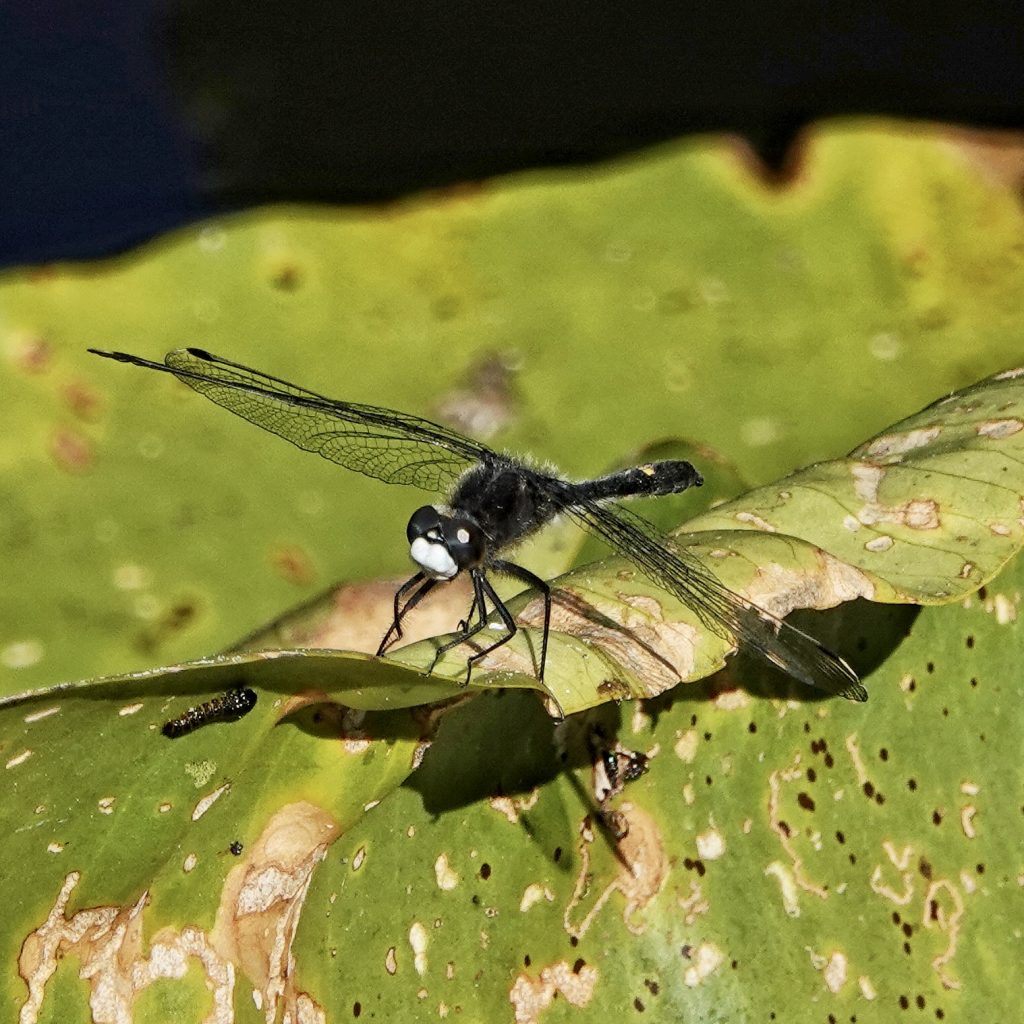
Males defend small territories from wherever they may be perched, although they aren’t particularly strict about it, and in my experience are more likely to chase away other species like Blue Dashers and mosaic darners, than they are to roust conspecific rivals, at least when they are unpaired. Mating takes place atop some sort of relatively concealed vegetation, although they may fly some distance together joined in the ‘wheel’, looking for a secluded spot. Afterwards, while the female is ovipositing by dipping her abdomen into likely spots, the male takes up guard duty, and will either drive off interested males, or physically restrain them in what is known as ‘karate guarding’.
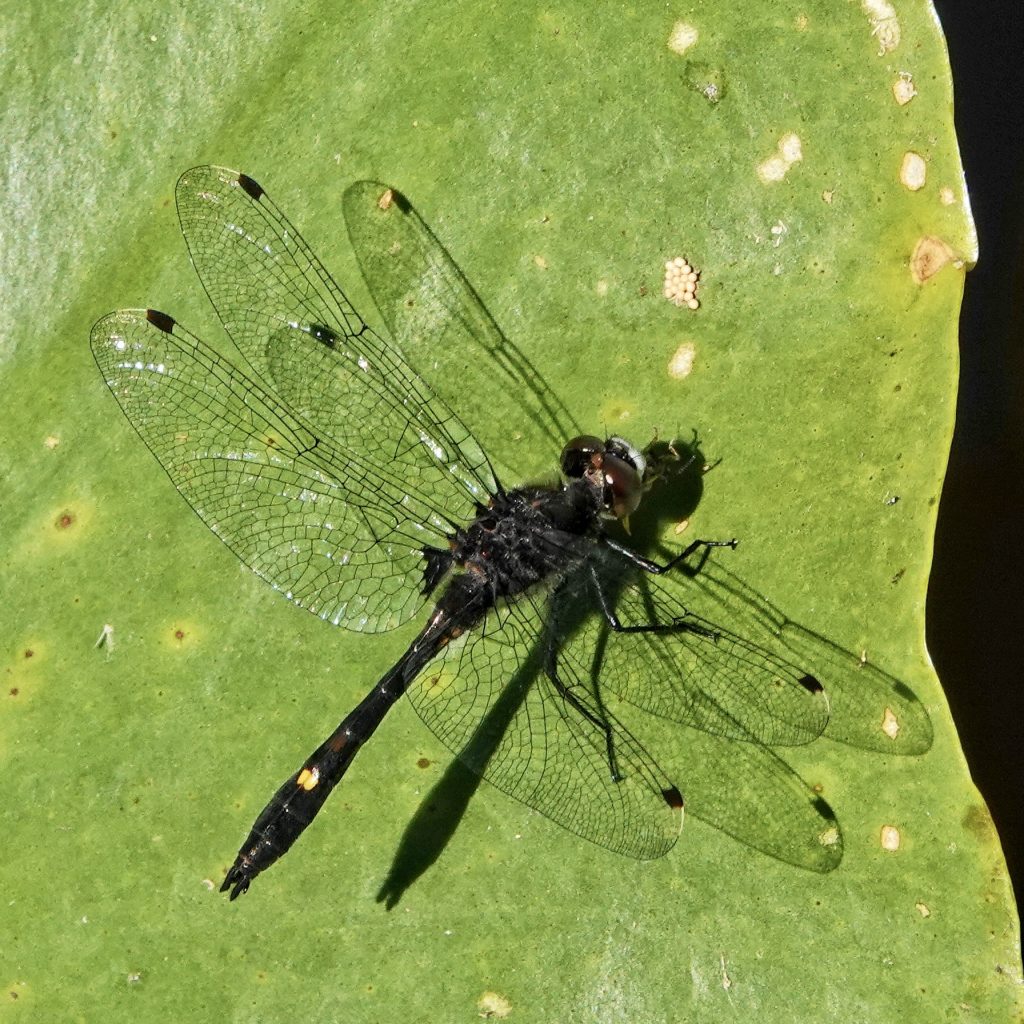
Description-Small (length 29-33mm; wingspan 48-52mm) whiteface with the eponymous white face, and an obvious yellow mark 2/3 of the way down the abdomen; mature males have solid black thorax and abdomen; females have a brown thorax with dark spots below the wing base, and an abdomen that is yellow at the base that extends along the sides to the 3rd or 4th segment (S3-4), although they darken with age and end up looking much like the males except for the lateral spots on S3-4; tenerals and immatures have a pale line in the center of the thorax; the wings are usually clear except for the dark pterostigma and a black triangle at the base of the hindwing, but some immature females have amber coloring near the wing bases.
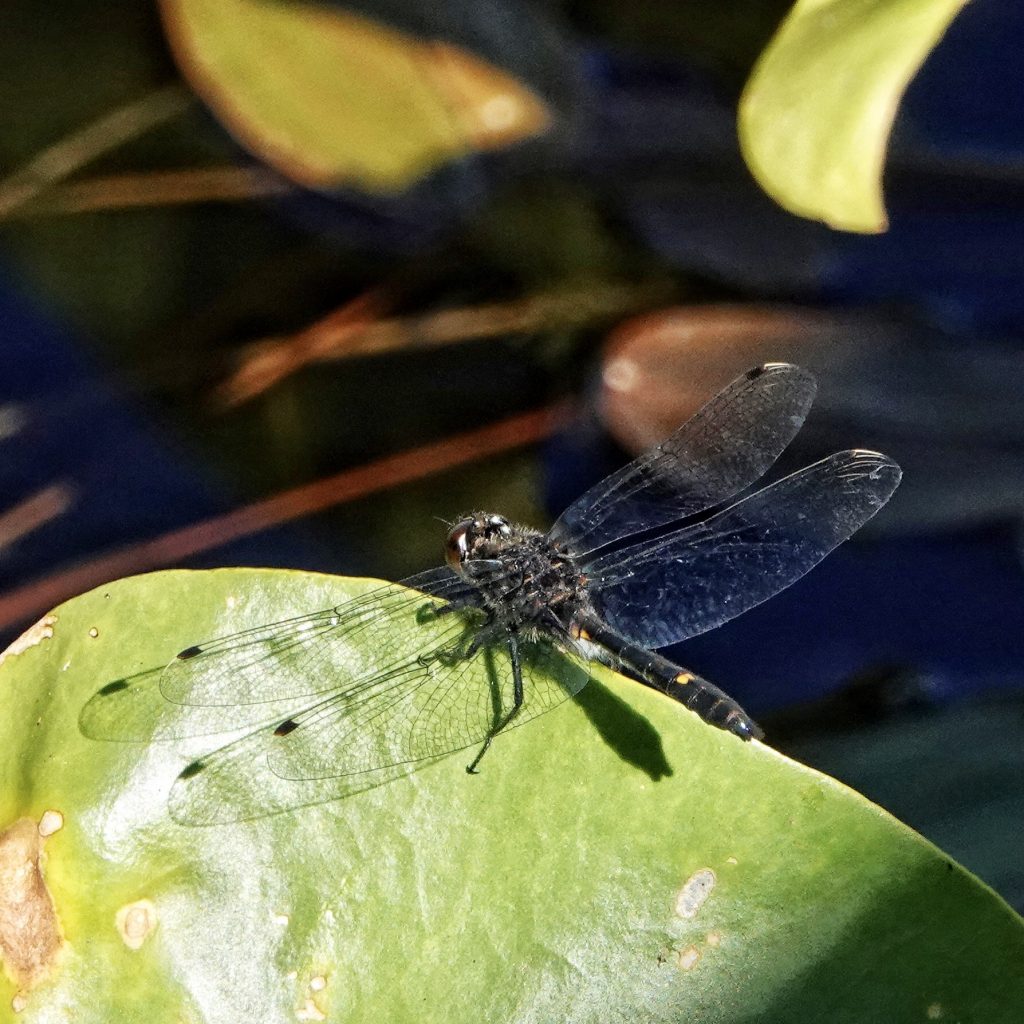
Similar species-Nothing else has the white face, solid black body, and yellow spot on the abdomen of male Leucorrhinia intacta; other female whitefaces have longer, narrower yellow abdominal spot, and a more vivid pattern on the thorax; other teneral and immature whitefaces lack pale centerline on thorax; Band-winged Meadowhawk has sharper, less diffuse color than female Dot-tailed Whiteface.
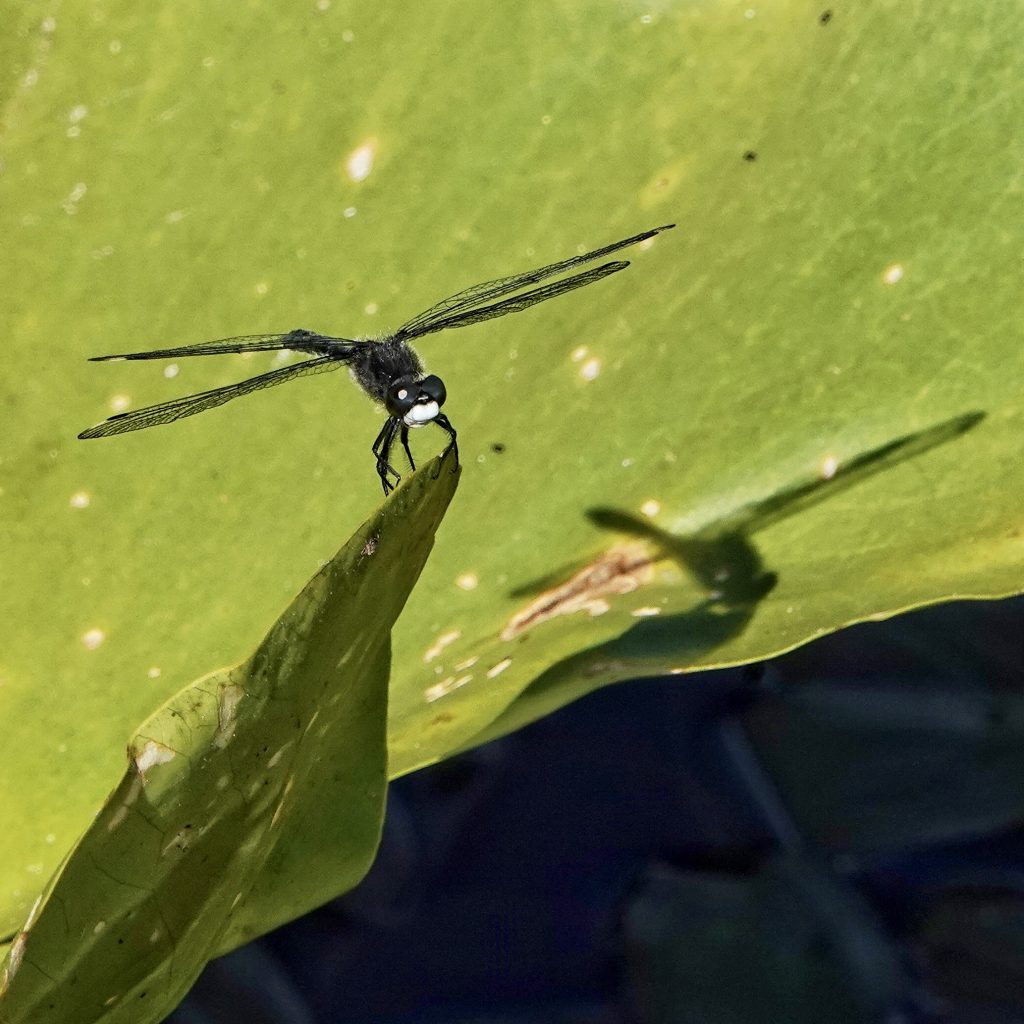
Habitat-Still or very slow water with abundant emergent and submerged vegetation, may be found up to high elevations, but is much more common in warmer, low elevation waters; immatures can range far from water, and adults will often hunt in fields adjacent to the body of water.
Range-North America; region wide in appropriate habitat.
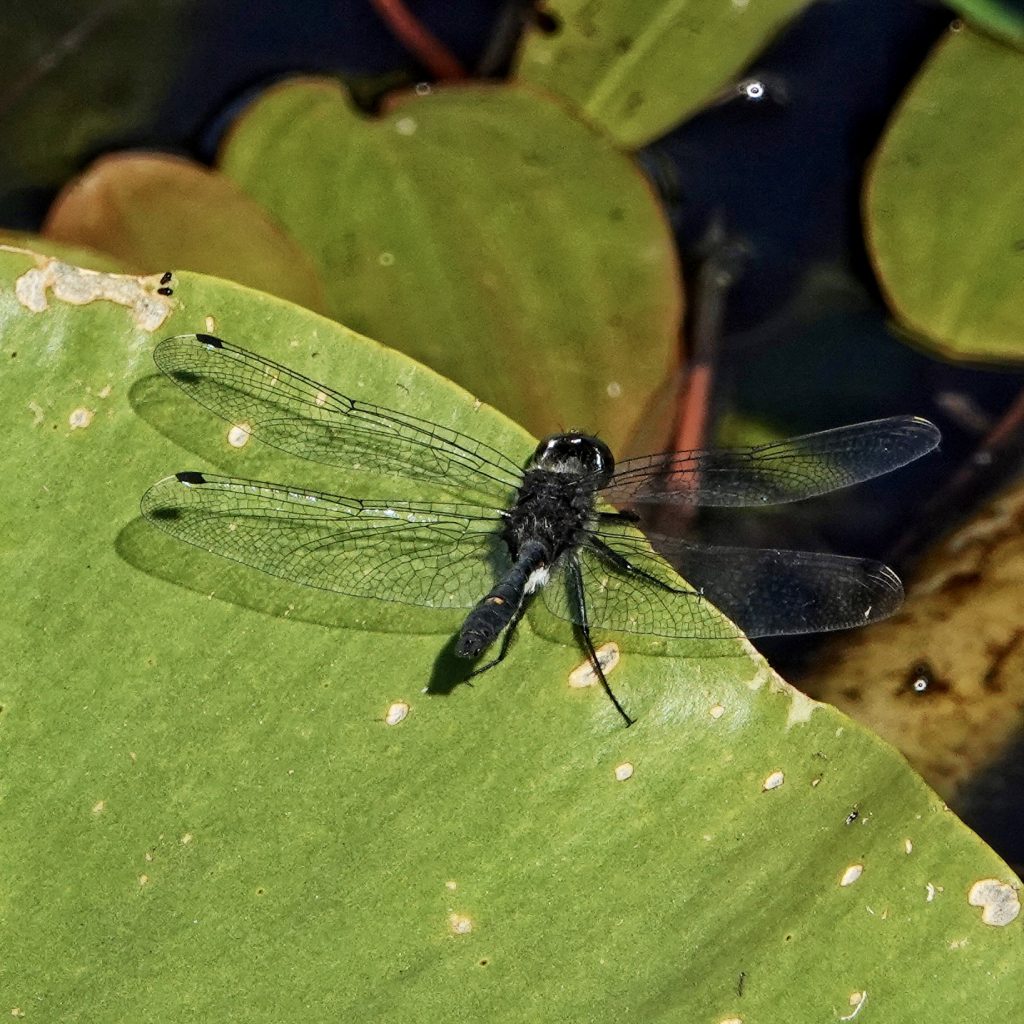
Eats-Adults and nymphs eat anything they can catch and subdue.
Eaten by-Any insectivore that can catch and subdue it.
Adults active-May to September, depending on elevation.
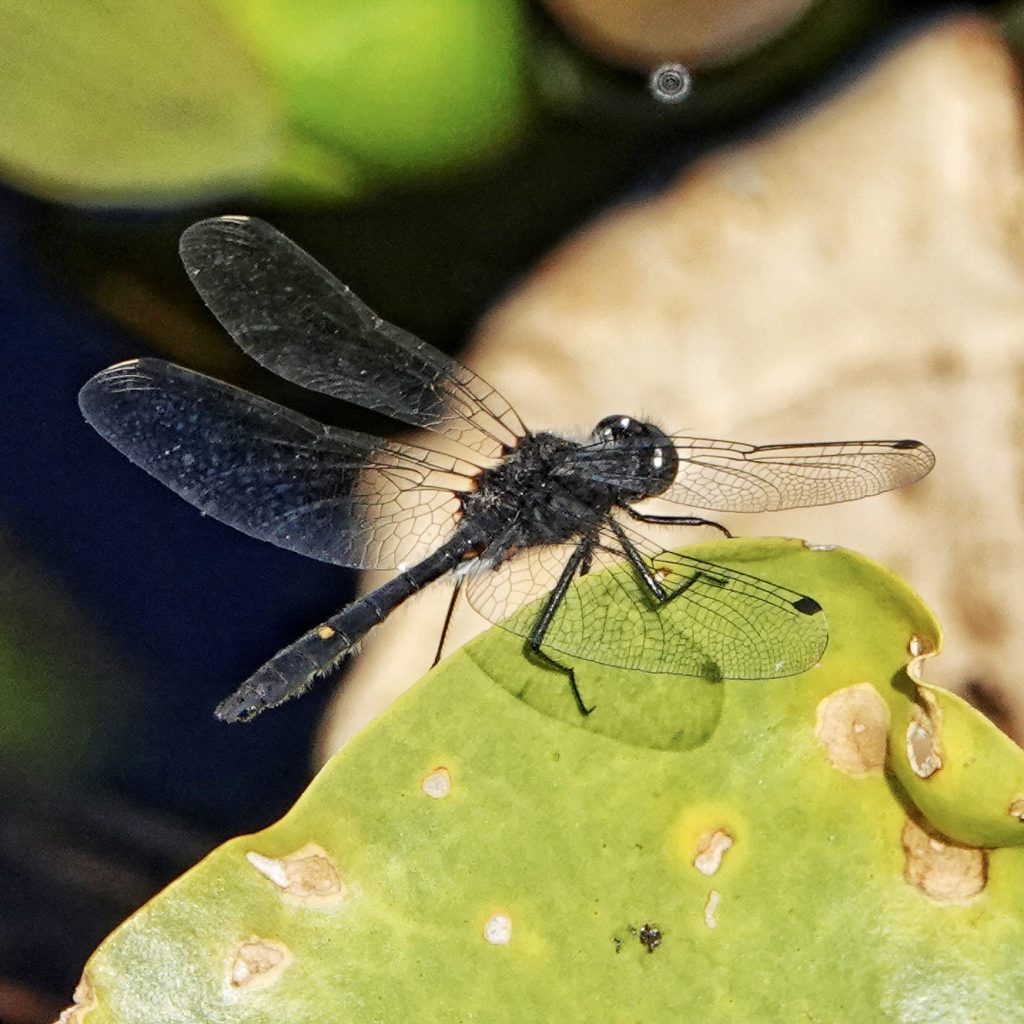
Life cycle-Primarily univoltine, but may be semi-voltine in areas where cold or lack of food resources don’t allow them to complete their instars in a year; eggs deposited irregularly over open water, but may be grouped over floating algae and underwater vegetation; nymphs hide on muddy bottoms, usually near or within debris or vegetation; overwinter as nymphs in diapause.
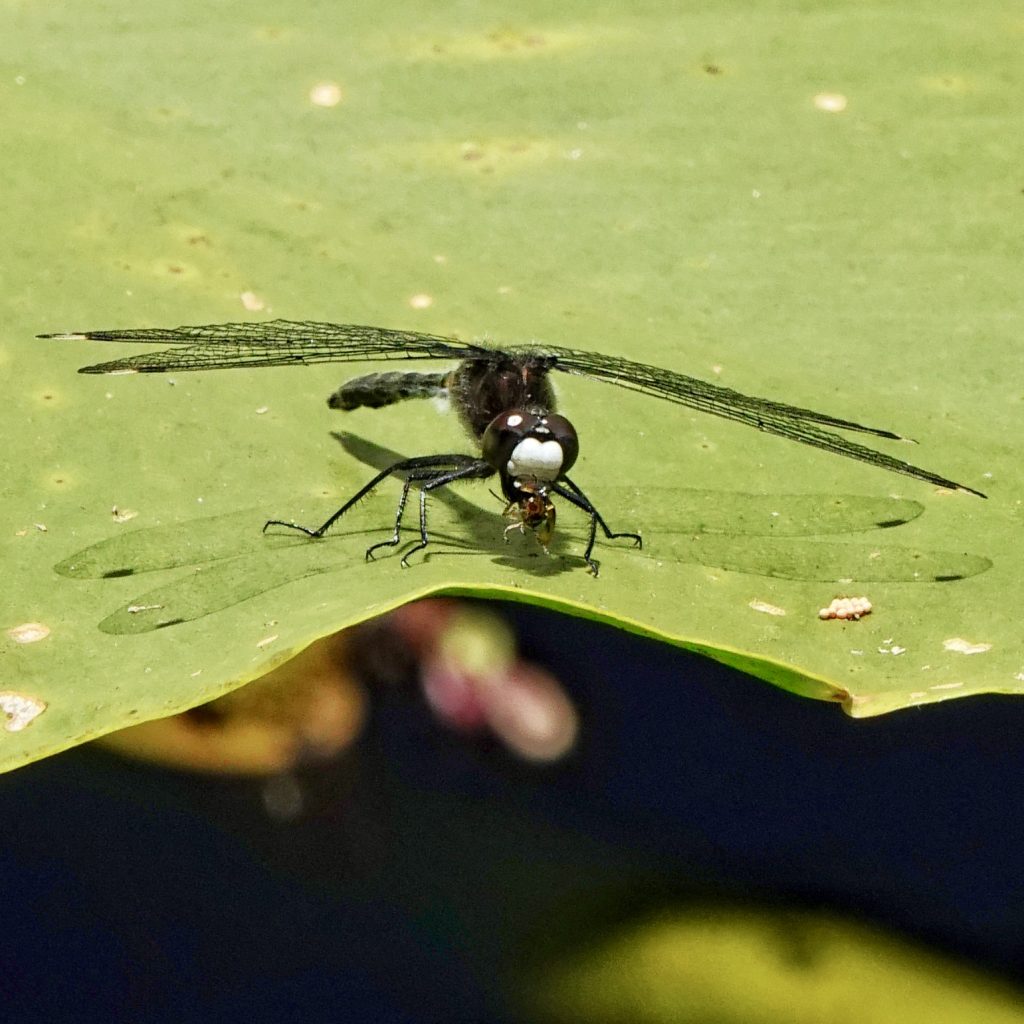
Etymology of names–Leucorrhinia is from the Greek words for ‘white’ and ‘nose’, referring to the white face of most members of this genus. The specific epithet intacta is from the Latin for ‘unblemished/chaste’ and may be a joking reference to the single yellow dot on the abdomen, which is the only marking on the otherwise solid black body of a mature male. But I can find no corroboration for this.
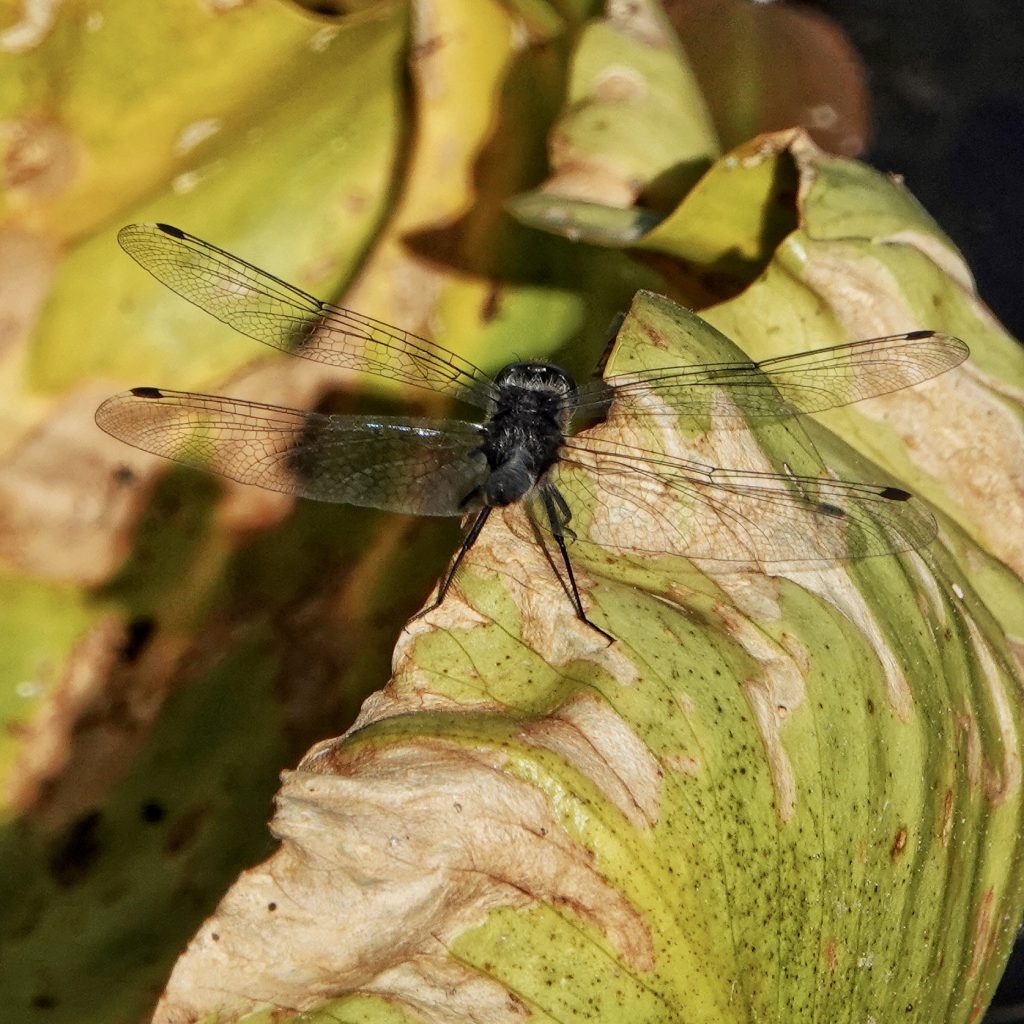
Dot-tailed Whiteface Dragonfly (Family Libellulidae) – Field Station
Species Leucorrhinia intacta – Dot-tailed Whiteface – BugGuide.Net
https://en.m.wikipedia.org/wiki/Dot-tailed_whiteface
https://www.merriam-webster.com/words-at-play/prepositions-ending-a-sentence-with
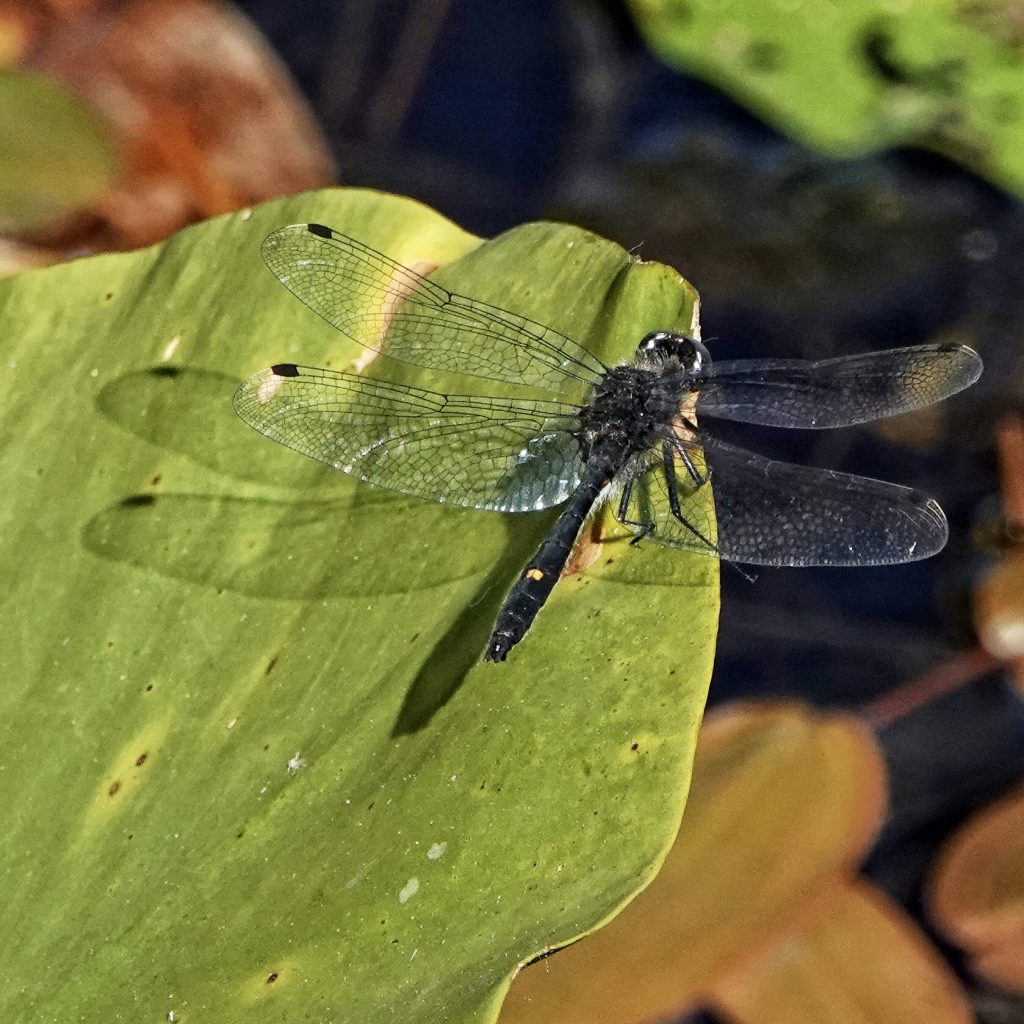
Voltinism! A new word for me! Thanks!
Always happy to share the extensions of my own vocabulary engendered by my research into our varied lifeforms.